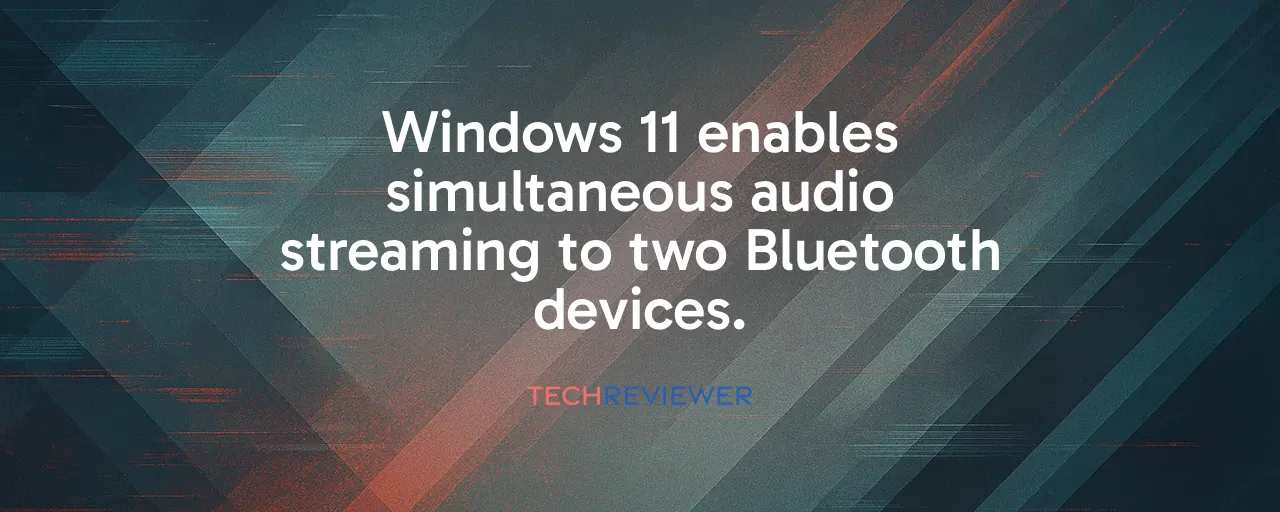Dual Audio Arrives on Windows Desktops
Microsoft started rolling out a preview feature in Windows 11 that sends the same audio stream to two separate wireless devices. Users connect Bluetooth Low Energy headphones, earbuds, speakers, or hearing aids to a single PC. A toggle in Quick Settings activates the shared mode. This builds on the LE Audio support Microsoft added in August 2025, which first improved sound quality for games and calls.
The setup relies on the LC3 codec, compressing audio efficiently while keeping quality high at lower bitrates. Power use drops up to 50 percent compared to older Bluetooth methods. Latency stays between 20 and 40 milliseconds, suitable for video playback without noticeable delays. Range can exceed 100 meters in clear conditions.
Everyday Scenarios Gain From Simultaneous Playback
Families on flights watch movies together through individual headsets linked to one laptop. Students in study groups listen to lectures or music without splitting earbuds. Hearing aid wearers access announcements in public spaces more easily. Business teams review multimedia files side by side with synchronized sound.
ReSound Nexia hearing aids already support this broadcast standard, allowing direct streams in clinics or venues. Travelers benefit from private audio in noisy environments like trains or airports.
Hardware and Connection Limits Shape Early Use
Only Copilot+ PCs equipped with Snapdragon X or Intel Core Ultra Series 2 processors currently support the broadcast functionality. The preview caps connections at two devices, even though the Auracast standard allows many more. Older Bluetooth gear stays incompatible, requiring new purchases for full access.
Interference from WiFi or microwaves in the 2.4 GHz band can shorten range or cause dropouts in crowded areas. Firmware updates on devices ensure smooth operation, but not all models have them yet.
Samsung and Google Set Earlier Examples
Samsung integrated similar sharing in Galaxy Book5 laptops using Intel processors. Users pair multiple earbuds for collaborative work or entertainment. Google added the capability to Pixel 8 phones with Android 16, focusing on quick device switching.
These approaches differ in user interfaces but follow the same Bluetooth LE standards. Microsoft catches up by embedding controls in Windows Quick Settings for faster access.
Airport and Airline Deployments Reveal Practical Lessons
San Francisco International Airport plans to upgrade terminals with Auracast broadcasts for gate info. Hearing aid users tune in without extra loops, cutting installation costs for large spaces. The system retrofits existing announcements, avoiding full rewires.
KLM plans to test in-flight sharing on seat screens, letting families sync movies across headsets. Confined cabin spaces highlight synchronization needs, where even small delays disrupt viewing. Pilots showed volume adjustments per device prevent arguments over levels.
Accessibility Advances Meet Adoption Hurdles
Advocates from groups like the American Foundation for the Blind praise the potential for public inclusion. Battery life in hearing aids improves 30 to 40 percent with LE Audio. Yet device availability lags, as most current headphones lack support.
Manufacturers like Sony with WH-1000XM6 models lead compatibility. Smaller brands face certification costs. Users in regions with strict spectrum rules encounter varying performance.
Broadcast Security and Privacy Considerations Emerge
Streams encrypt at the link layer, but anyone nearby with a compatible scanner detects the signal. No built-in logs track sessions, complicating misuse detection. Applications handling sensitive content need extra encryption.
Public broadcasts in cafes or offices raise location tracking risks through signal patterns. Clear user prompts in Windows help manage visibility.
